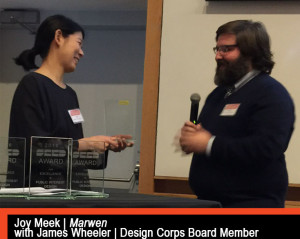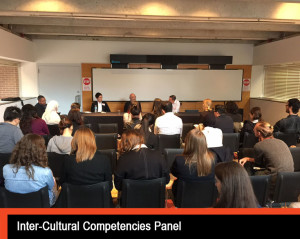
| SFI 16 RECAP
The sixteenth Structures for Inclusion (SFI 16) conference was held on March 19-20, 2016 in Raleigh, North Carolina, hosted by North Carolina State University. The annual conference features the best public interest design from around the globe, including the SEED Award winners. For sixteen years, the purpose of the SFI conference has been to bring together and share the best ideas and practices that are reaching those currently un-served by architecture. |
 
|
FEATURED SPEAKERS: SEED AWARD WINNERS
Andrew Brose, MASS Design Group, Ilima Primary School
Emilie Taylor, Tulane City Center, Parisite Skatepark
Elaine Morales Diaz, bcWORKSHOP, and Leo Barrera, CDC Brownsville, RAPIDO – Rapid Disaster Recovery Housing Pilot Program
Joy Meek, Wheeler Kearns Architects, Marwen
Mary Hardin, College of Architecture, Planning and Landscape Architecture, University of Arizona, Barrio Collaboration
Donghwan Moon, Mtree Architecture, Maya Community Project
PANELS
Activist Architecture Firms
These firms have a standard practice but are also producing new models for public interest design of exceptional quality. The panelists will discuss what public interest practice means to them and how they do it.
* View panelists’ bios and panel summary here.
Disaster Preparedness and Response
In the last ten years since Katrina, public interest designers have become increasingly effective contributors of new ideas about preparing and responding to environmental disasters. The panel will discuss new roles and models for environmental resilience.
* View panelists’ bios and panel summary here.
Public Interest Design Partners
The rapid growth of public interest design is largely due to new diverse partners — such as cities, developers, foundations and even groups like tourism organizations. The panel will discuss the perspectives of these important partners who are effectively serving the public, and will explore what role PID can play to aid their work and goals.
* View panelists’ bios and panel summary here.
Public Interest Design Education
New ideas and models of PID education are growing quickly to train the current generation of students. Panelists will present new customized programs, discussion of the opportunities, and many examples of the “learning outcomes” that collectively start to shape a comprehensive PID curriculum.
* View panelists’ bios and panel summary here.
Activist Architecture Firms
These firms have a standard practice but are also producing new models for public interest design of exceptional quality. The panelists will discuss what public interest practice means to them and how they do it.
* View panelists’ bios and panel summary here.
Inter-cultural Competencies
How can public interest designers serve more diverse communities around the world without imposing our own culture on others? The panel will discuss models and methods that show respect and appreciation to generate equity and empowerment.
* View panelists’ bios and panel summary here.
SCHEDULE
View full schedule here.
TAKE-AWAYS
| Collective Action |
|
| Activist Architecture |
|
| Means of Engagement |
|
| Architects as Active Citizens |
|
| Engaging other expertise |
|
| Public Interest Education |
|
| Moving Forward |
|










